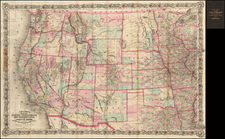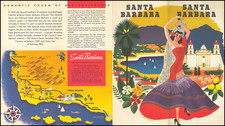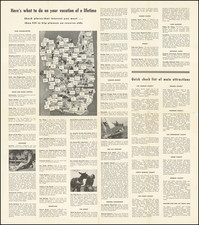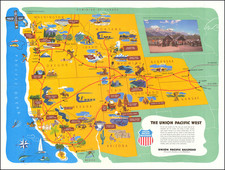Mapping One of California's Most Complex Rancho Partition Actions -- Ex-Theodore H. Hittel Collection (?)
A rare and historically significant portion map of San Pablo Rancho, illustrating the conclusion of over 40 years of litigation over the rancho granted in 1823 to Francisco Maria Castro (1770-1831), a member of the original Anza expedition, who arrived in the San Francisco area in 1776 and would go on to be one of the founders of the Pueblo of San Jose and one of its early Alcades.
Issued in conjunction with the Final Report of the Referees in Partition and created by surveyors G.F. Allardt and Maj. Fred. A. Clark, and draughtsman J.W.D. Jensen, the map lays out the findings of the court's 750 page final opinion, establishing the ownership of the former rancho lands among a litany of the heirs, successors, speculators and settler who came to own a portion of the San Pablo Rancho between 1833 and the late 19th Century, ending one of California's most prolific land cases.
Measuring 6 ft. 7 in. by 5 ft. 8 in., the map covers the region southeast of San Pablo Bay, bounded by Rancho el Sobrante in the east, and includes notable locations such as Point San Pablo, Molate Point, Point Richmond, and Point Potrero. The map further depicts extensive wetlands to the east of Potrero, which have since been almost entirely infilled, making way for modern infrastructure like the Richmond San Rafael Bridge.
In addition to its geographical features, the map offers valuable cadastral information, showcasing land divisions, property lines, and ownership details in the San Pablo Rancho region during this period. This level of detail makes the map a foundational resource for researchers and collectors interested in the history of land ownership and development in the California Bay Area.
Rancho San Pablo
Rancho San Pablo, one of the Mexican land grants in Alta California, came under Spain's and subsequently Mexico's rule before California became a U.S. state. This vast expanse of land, granted to Francisco María Castro in 1823, now encompasses modern cities such as Richmond, El Cerrito, and San Pablo among others.
Francisco Maria Castro was barely two when the Anza expedition reached the San Francisco Bay Area in 1776. Raised at Mission Dolores, Castro pursued a military career, serving in various capacities in the San Jose and San Francisco regions. His prominent roles included acting as the Alcalde (mayor and justice of the peace) of San Jose and the Majordomo of Mission Dolores in San Francisco. Following the custom of the Spanish era, Castro, a distinguished military man, was granted a large portion of land. He acquired a significant tract in 1814, known as Los Cuchigunes, located on the eastern shore of San Francisco Bay.
The land, which would later be known as Rancho San Pablo, was initially utilized as agricultural and grazing land by the Franciscans at Mission Dolores in San Francisco. Named Rancho San Ysidro de Los Juchiunes, soldiers of the Mission served as its custodians. The soldiers from San Francisco would often visit for hunting and fishing excursions, leading to Castro's acquaintance with the area.
Castro constructed a fortified residence with assistance from the local Indigenous people. He developed a thriving garden, planted numerous fruit trees, established a vineyard, and cultivated wheat, corn, and beans. He was known to own 600 cattle and 500 horses. Despite applying for an official land grant in 1817, he discovered that the priests at Mission Dolores in San Francisco still claimed the land. Castro reapplied to the Provincial Assembly on April 15, 1823, asking for ownership of three square leagues in the area known as Los Cuchigunes or San Pablo, approximating 17,000 acres. Father Altimira, the priest at Mission Dolores, endorsed the grant. Following this, Castro and his family moved to Rancho San Pablo, although the grant wasn't formally recognized until 1834.
Castro passed away in 1831. His estate, including the Rancho, was equally divided among his wife, Gabriella Berryessa Castro, and their eleven children. However, each interest was undivided, meaning each child owned a 1/22nd share, and Gabriella owned an 11/22 share of every part of the Rancho. When three of the children predeceased Gabriella, their property shares were reverted to their mother under Mexican law.
The Castro descendants initiated a legal battle in 1852 to challenge Francisco Castro's will. Numerous court cases ensued, leading to a convoluted ownership situation. The heirs, unsure of their exact ownership, occasionally sold off parts of their land to settlers and speculators.
After a lengthy 42-year legal saga, Judge J.C.B. Hebbard issued the Final Decree in Partition on March 3, 1894. This exhaustive 750-page decree clarified the ownership of Rancho San Pablo, specifying the location of the land owned by each valid titleholder. It also detailed a list of landowners in Rancho San Pablo and the extent of land each one held.
Provenance
The map's contemporary manuscript annotations indicate an association with T.H. Hittell who was perhaps the most significant 19th-century California historian.
Theodore Henry Hittell (1830–1917) was an American lawyer, historian, and author notable for his works on the history of California. Born in Jonestown, Pennsylvania, Hittell moved to California in 1855 during the Gold Rush. He was admitted to the California bar in 1859 and practiced law in San Francisco. Hittell is best known for his comprehensive four-volume work "History of California", first published in 1885. This extensive work became a valuable resource for understanding California's early history, its connection to the Gold Rush, and its transition into statehood.
In addition to his legal practice and historical writings, Hittell served as a secretary for the California Academy of Sciences for over twenty years. He also wrote "Adventures of James Capen Adams: Mountaineer and Grizzly Bear Hunter of California", a biography of the famous mountain man.
Theodore H. Hittell's contributions to California's history and literature have made him a significant figure in the state's cultural and intellectual development.
Rarity
The map is extremely rare. No surviving examples are known.
OCLC locates a full sized photocopy in the California Historical Society.













![Reconnaissance of San Clemente Harbor [with] Prisoner's Harbor . . . [with] Cuyler's Harbor Island of San Miguel . . . 1852](https://storage.googleapis.com/raremaps/img/small/102987.jpg)


